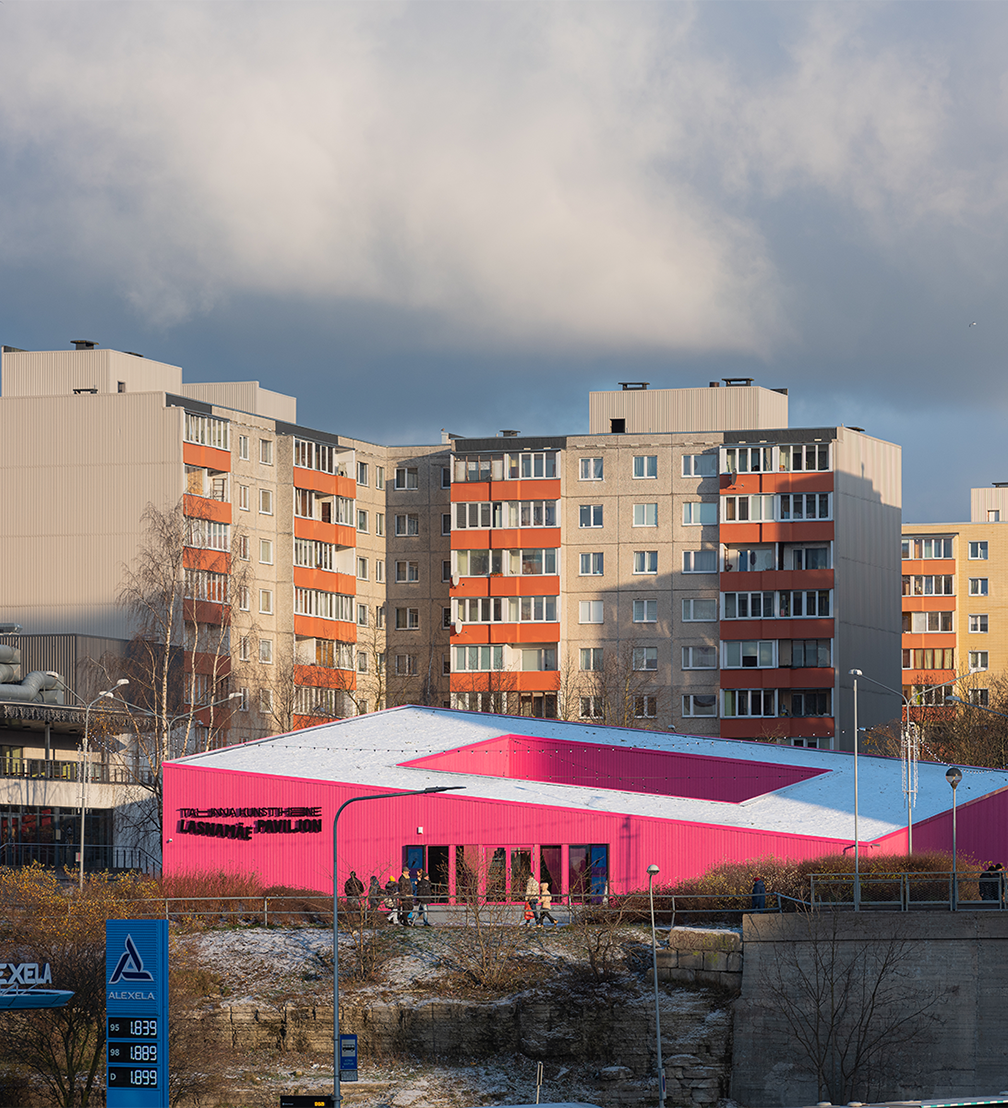
Tallinn Art Hall is one of the most well–known institutions of contemporary art in Estonia with a building in the centre of Tallinn built in 1934 by the Estonian Artists’ Association. This year, the building was closed to visitors for renovations, and the programme of exhibitions and events was moved from the centre to a temporary exhibition pavilion in the remote Lasnamäe district. We reached out to pavilion visitors and art professionals to find out their opinions on the new art space in Tallinn’s biggest microrayon.
The efforts of architects to better integrate Soviet–era micro–districts or microrayons in the context of the local environment have so far not yielded significant results. There have been studies, exhibitions, and books, but the leaders in practice are municipalities, which continue to insulate residential buildings in order to reduce carbon dioxide emissions and heat bills of residents, sometimes even fixing a balcony that has almost fallen down. Although chaotically developed, dilapidated and with unattractive public space, the micro–districts of the Soviet era offer relatively good living conditions. In Riga, they are characterised by the proximity of forests and waters, good public transport connections with the city centre, as well as the availability of services.
Residents of microrayons are also mostly satisfied with life, apartments in them are in demand, for many, it has been their home since birth, which explains their reluctance to change their place of residence. These opinions are also strengthened in the cultural space, for example in the documentary film Blocks by the Polish director Konrad Krolikowski, which offers both a critical assessment of architects in the context of the socialist heritage and calls for empathy, revealing the opinions of the residents of these buildings. The residents’ desire to adapt their blocks of flats for better living is also confirmed by the works of award–winning French architects Lacaton & Vassal, especially the renovation of a complex of 530 apartment buildings in Bordeaux, which in 2019 received the European Union Prize for Contemporary Architecture — Mies van der Rohe Award. It is an office that practises the «never tear down» approach, listening to the residents of apartment buildings who, not wanting to change their place of residence, have found ways to improve the projects on their own.
The micro–districts of the Soviet era and the scale–degrading superstructures of the cultural landscape of the Baltic region have been a favourable theme of architecture biennales. In 2018, with the national exposition and the book Together and Apart, Latvia participated in the 16th international architecture exhibition at the Venice Biennale, paying attention to the domestic choreography of multi–apartment buildings, including micro–districts. The programme of the 2022 Tallinn Architecture Biennale, on the other hand, included an international vision competition for strengthening the communities of the Lasnamäe micro–district and stimulating a healthy lifestyle. Even earlier, in 2012, Estonians at the Venice Biennale dedicated their national pavilion to the possible future scenarios of the monumental modernist cultural building Linnahall. Ten years later, the house is still in a dilapidated state, but similar to the Fabijoniškės neighbourhood of Vilnius, which was chosen for the filming of the award–winning HBO series Chernobyl, Linnahall was also seen in Ted Nolan’s blockbuster Tenet as a background for a bloody shootout.
Similar to how Chernobyl opened up opportunities for a new genre of tourism of Soviet micro–districts in Vilnius, Tenet also highlighted the previously mentioned Lasnamäe. In the film, the audience is literally paralysed for several minutes by a spectacular chase scene shot on the main highway of the residential area. On the one hand, it was a major event in popular culture that gave jobs to local creative industries. But on the other hand, it was an event that closed the streets to traffic for a couple of days and angered the local population more than it thrilled it. Lasnamäe is still a district separated from Tallinn, where only this year the first building of contemporary culture — the Lasnamäe pavilion of Tallinn Art Hall — was opened. The new pavilion designed by Salto Architects, was opened on November 19.
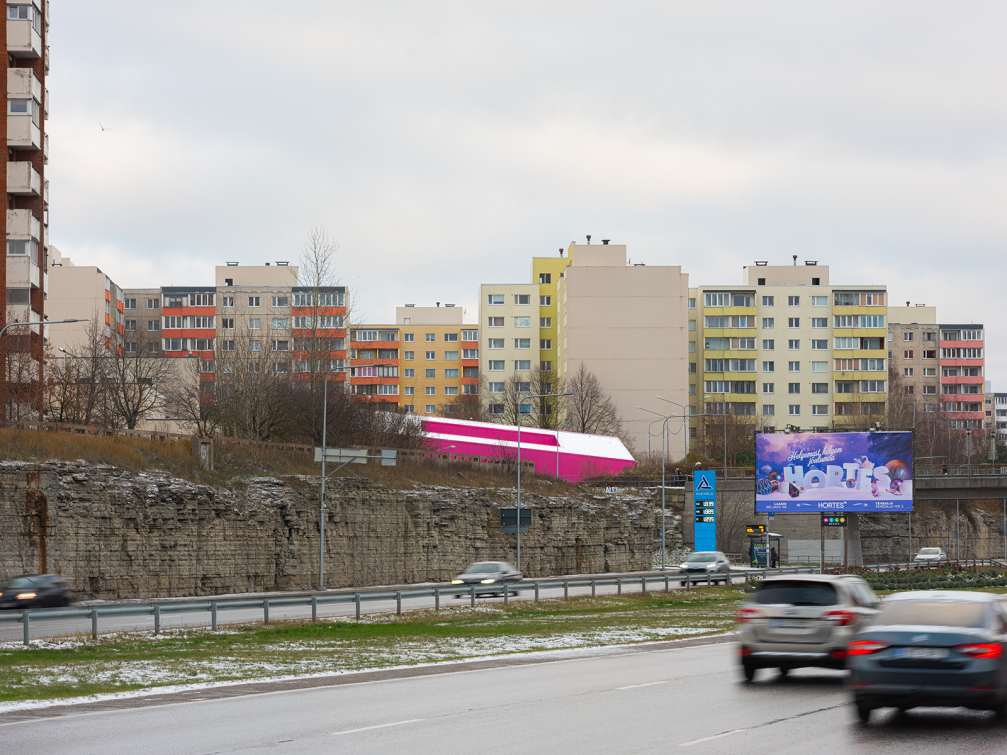
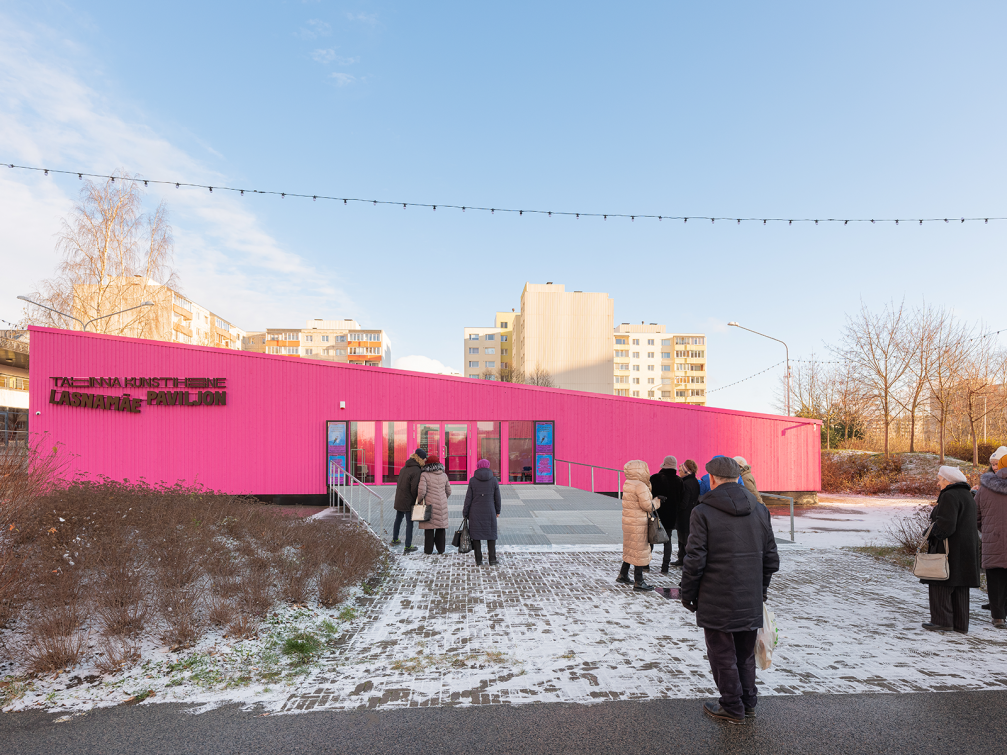
What were your impressions after visiting the Lasnamäe pavilion?
Liene Pavlovska, an artist, who visited the pavilion during the opening days, answers.
I went to the pavilion on foot after visiting the Kumu Art Museum. The length of the walk was about half an hour, but the differences in the environment were considerable. From a district with neat, renovated wooden buildings, museums, parks and upper–middle–class brunch spots, I reached post–Soviet reality through a pedestrian path that winds through an apocalyptic park. The pavilion is placed next to a culture house, where I saw a class of young leotard–clad dancers. People with plastic shopping bags from nearby supermarkets crossed the wide courtyards of blockhouses.
The pavilion is garish pink, contrasting with the grey Soviet architecture. It seems that the position of the pavilion, as well as the name of the first exhibition, has a fundamental connection with the socio–political context of the place, and is deliberately made visible. The first exhibition at the pavilion, entitled Is There Hope for Lovely Creatures? (curator — Tamara Luuk), gathers the works of female artists from the Russian–speaking Estonian community. Although the exhibition was moving, the architecture of the pavilion did not tickle my mind with pleasant delight. But its interior came close to it.
The pavilion is like a tilted rhombus with a courtyard in the middle. Entering the room through a double–glazed door with a wide opening, opposite it, there is another door that leads to the inner courtyard. I visited the pavilion at dusk, and this time suits it well, because both the architectural outlines of the courtyard and the distant lights of the blockhouses are visible. The walls of the room are finished with grey painted plywood, which seems like an imitation of concrete, and the effort of the room to pretend to be something permanent, made from «real materials» was conceptually and emotionally engaging.
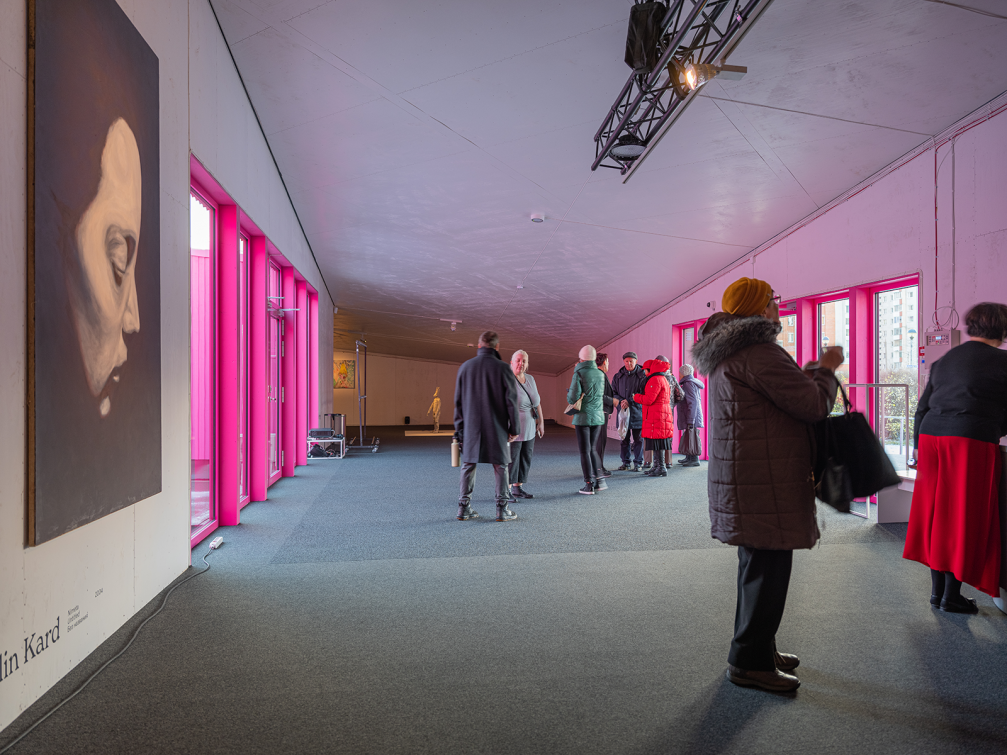
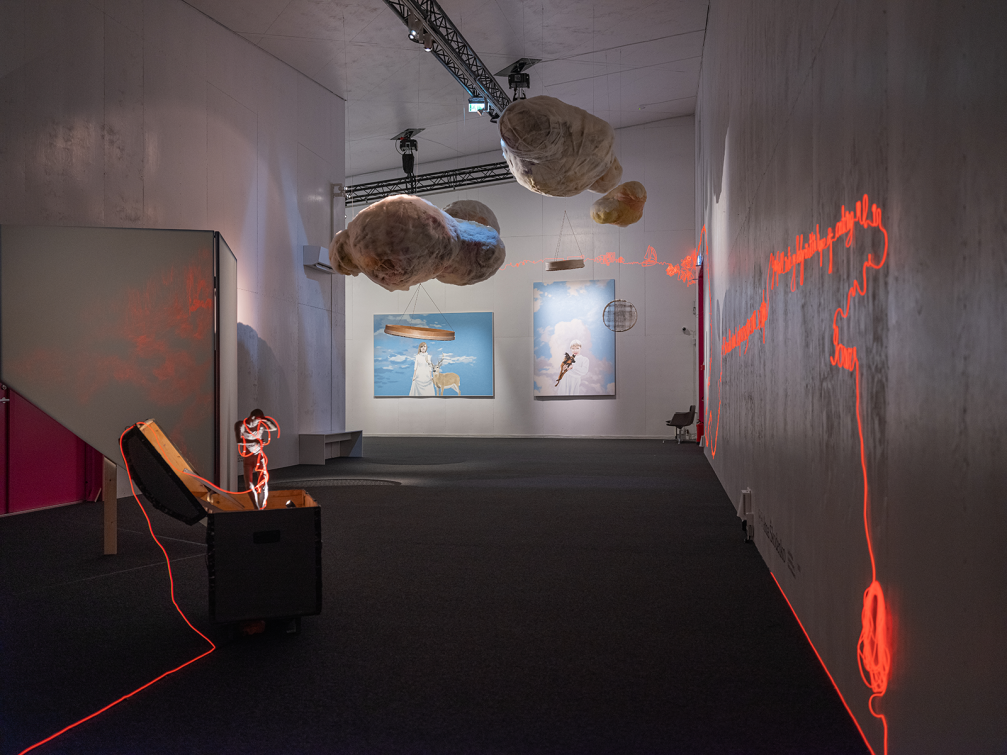
How did you decide to create your temporary exhibition space in Lasnamäe? Is this an isolated case or part of a wider programme of neighbourhood integration, also affected by Russia’s war in Ukraine?
Paul Aguraiuja, director of Tallinn Art Hall, answers.
We decided to go to Lasnamäe, because there is a high population density and almost no cultural activities. If Lasnamäe were a separate city, with its 120,000 inhabitants it would be the second largest in Estonia. People go there mostly just to sleep, and they don’t have easy access to contemporary Estonian culture. 75% of Lasnamäe residents do not speak Estonian as their mother tongue. Our decision to move there was made about a year before the war started, so it is not part of a larger initiative.
How was the collaboration with the architects? What was their task? Did you involve local people?
I had already worked with Salto Architects in 2011, when Tallinn was the European Capital of Culture, to build a temporary performing arts building called Straw Theatre. Based on this experience, I was confident that they would rise to the challenge. We gave the architects very little guidance — the only goal was to have a 500 square metre exhibition space and the building had to be reusable. The possibility to dismantle the building and build it in a new place was a mandatory requirement. We also emphasised the importance of sustainable construction. The architects’ first proposal was so good that it had to be scaled down just a little to make construction easier. The visual and colour solutions remained as proposed by the architects.
We didn’t talk to local residents during the planning process. We had open meetings with the residents of the surrounding houses, but interest in them was extremely low. The main negotiating partner was the local government, which knows the residents and their concerns well. After the first two weeks of opening the Lasnamäe pavilion, we already had 2,000 visitors. The reaction to finally bringing world–class contemporary culture to Lasnamäe has been mostly positive, but we’ve also seen extremely negative comments from parents and disgruntled members of the Russian–speaking community.
Who initiated this project, Tallinn Art Hall or the municipality? Is the building on municipal land, how was this project financed?
I wrote an e–mail to the head of the district municipality to introduce our plans to move to Lasnamäe and asked if there was a vacant building. They offered several variations, but none of them were ideal for exhibitions. One day, in one of the proposed buildings, we were looking out the window at an empty plot together, and suddenly the idea of a pavilion was born. The plot of land belongs to the city of Tallinn and we had to get permission to build the building. Fortunately, it went pretty smoothly.
The construction of the Lasnamäe pavilion was funded by the Estonian Ministry of Culture as part of the renovation project of our main building in Freedom Square. Since the renovation will take at least 2.5 years, we needed a temporary place. The total cost of building the pavilion was a little over 500,000 euros.
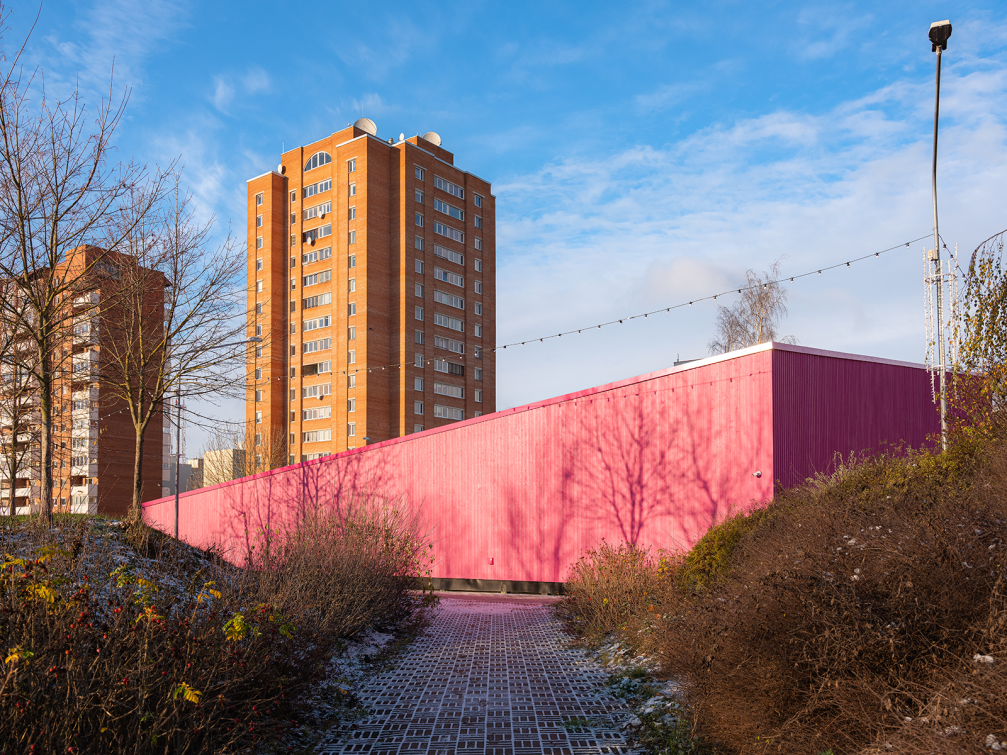
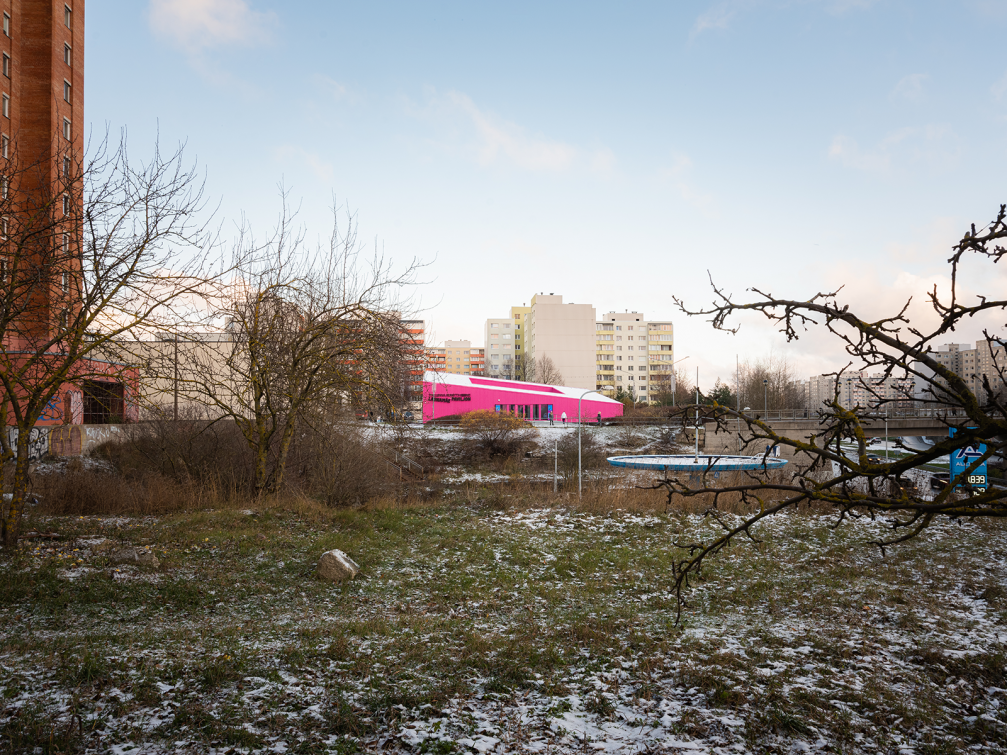
How do art professionals in Tallinn evaluate the Lasnamäe pavilion?
Lilian Hiob, independent curator and gallerist, founder of Hoib Gallery, answers.
The relocation of Tallinn Art Hall from the city centre to the area of Soviet apartment blocks, where many residents are Russian–speaking and with lower wages, is both a challenge and a potential. It is a challenge to interest foreign guests and exhibition visitors for the long journey from the old town to the Lasnamäe district. On the other hand, 26% of the total population of Tallinn lives in Lasnamäe, so the pavilion has a huge opportunity to integrate the Russian–speaking residents of Lasnamäe into the field of contemporary art. I dare to say that contemporary culture is an uncharted territory for many residents of Lasnamäe, and Tallinn Art Hall is now responsible not only for bringing contemporary culture to this area and creating exhibitions as usual, but also for making the programme relevant to the context and audience. This requires sensitive curators who understand the context in which they work, progressive educational programmes, appropriate visual and social media communication, patience, and building an atmosphere of trust with local communities. The Tallinn Art Hall team has these qualities, so I look forward to what they will achieve in these two years spent in Lasnamäe.
Why is getting to Lasnamäe a challenge? Is public transport available? Could Rail Baltica change the situation? Will culture become more accessible?
Lasnamäe is a district with its own infrastructure, and people who don’t live in Lasnamese don’t go there because they have nothing to do there. Lasnamäe has kindergartens, schools, playgrounds, shops, so if you live there, you don’t need to go outside the area. There are buses from the centre to Lasnamäe, it takes about 30 minutes, but the area is mentally segregated — Russian–speaking, with lower wages and not very well integrated into the Estonian–speaking population and culture. Rail Baltica won’t change the situation in Lasnamäe. But Rail Baltica will certainly activate the cooperation of the Baltic states, for example, Veru, which is a city near the Latvian border in Estonia with an active cultural life. The people of Veru hardly visit Tallinn, and vice versa when it comes to culture.
The pavilion of Tallinn Art Hall in Lasnamäe is open to visitors every day, except Monday and Tuesday. The programme is available on the website of the art hall.
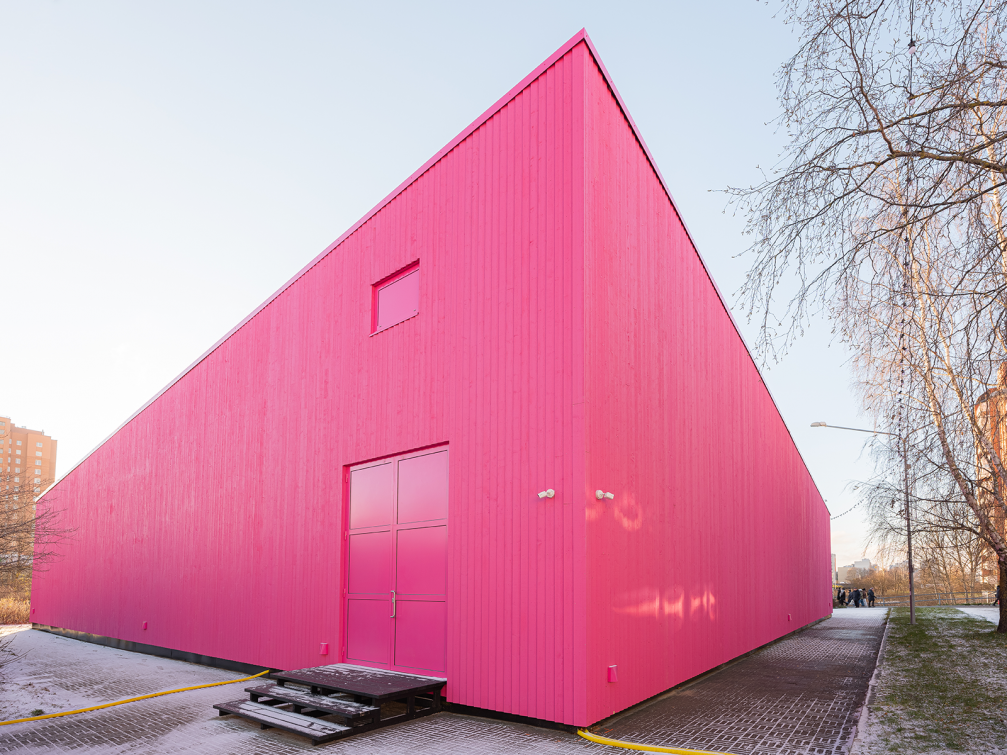
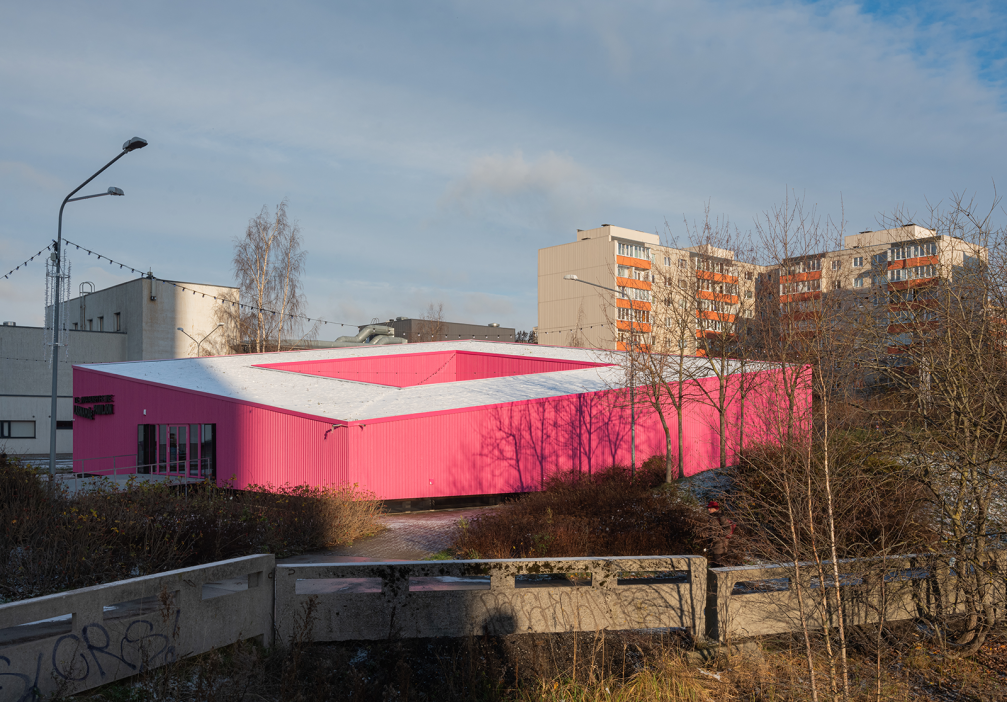
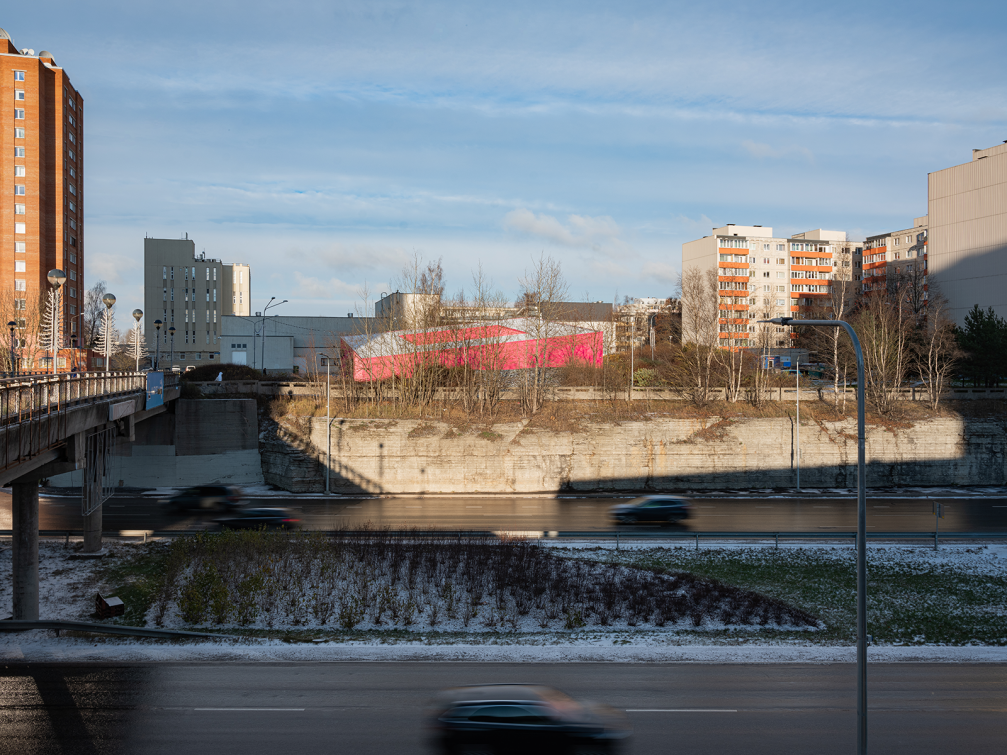
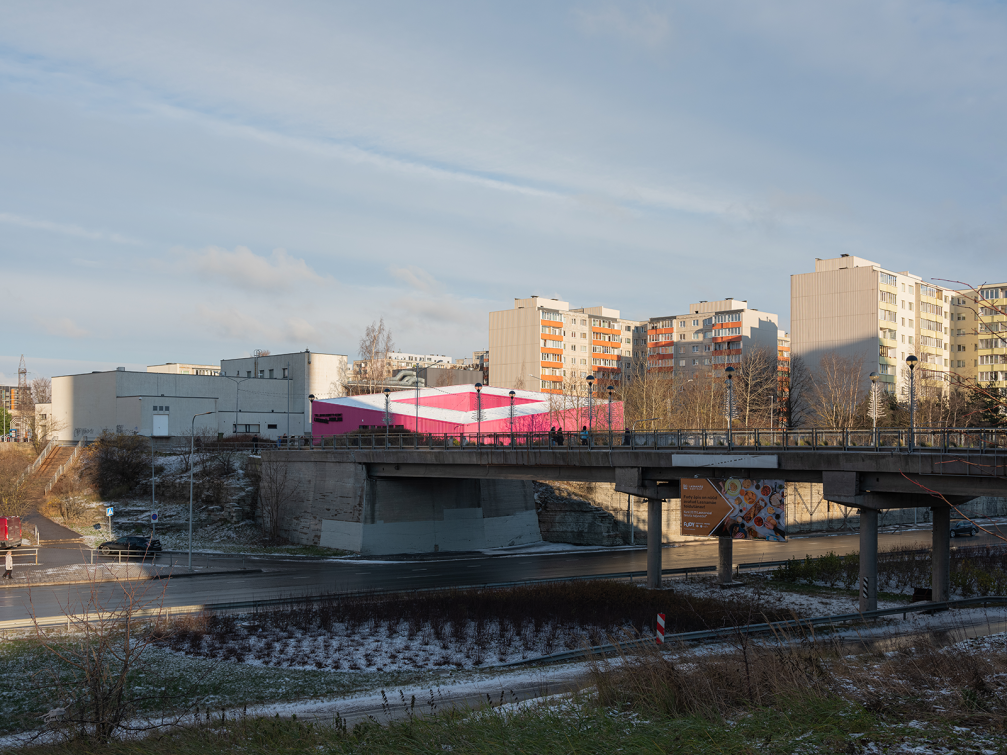
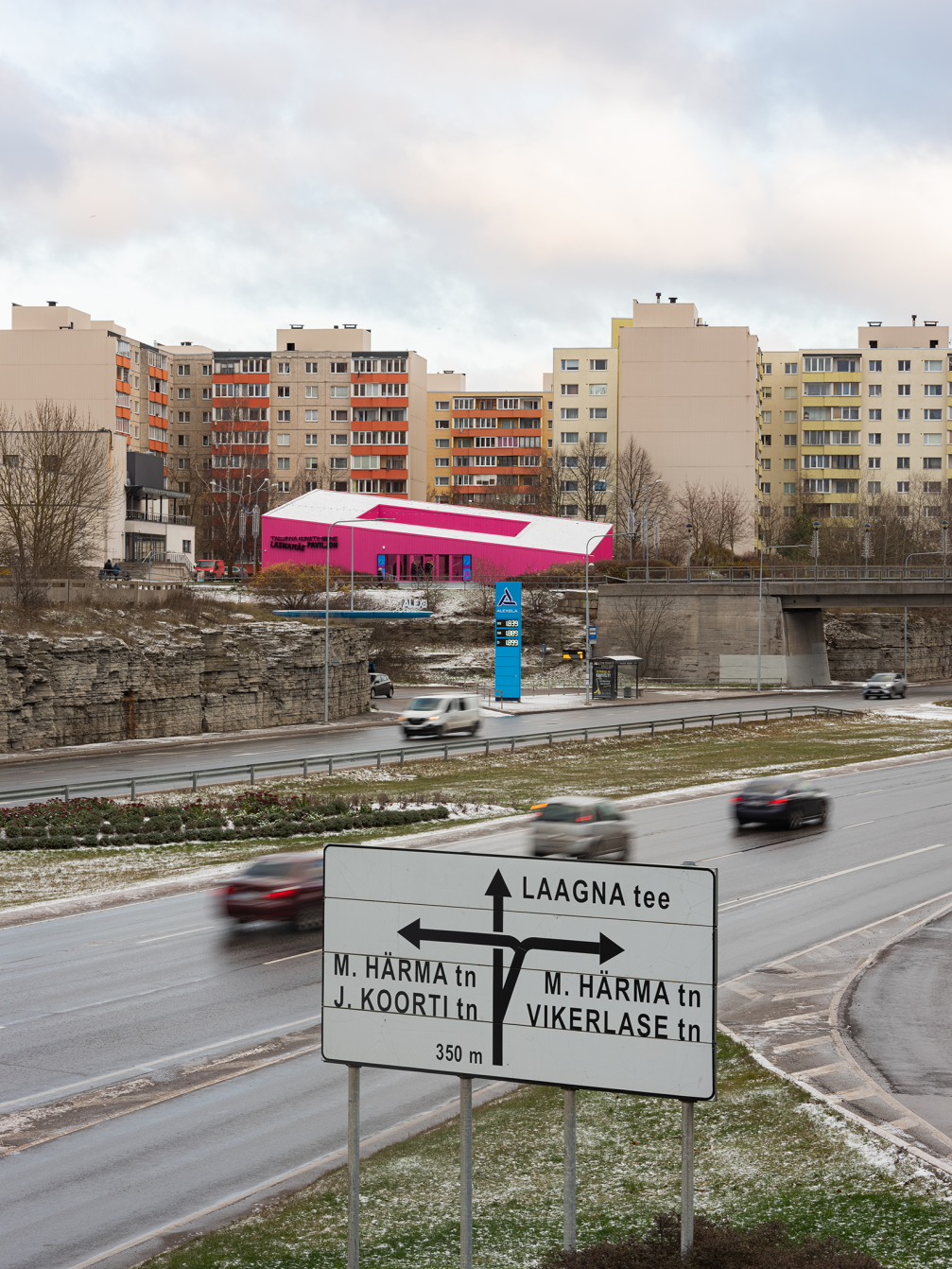

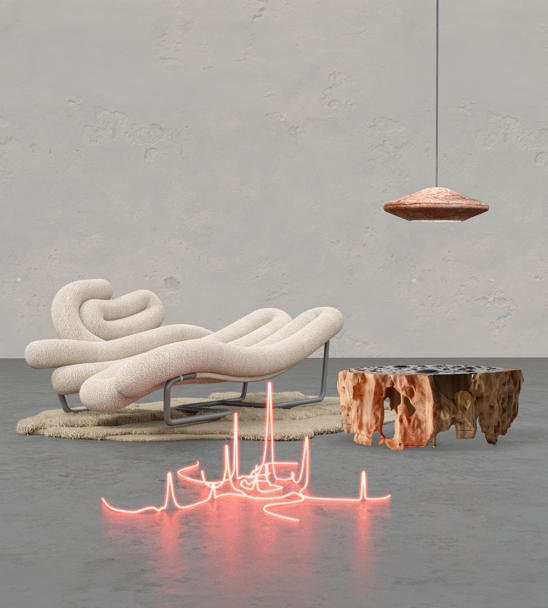
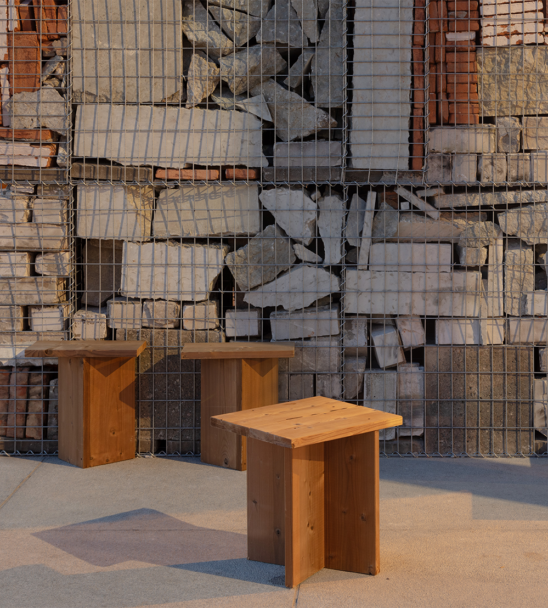
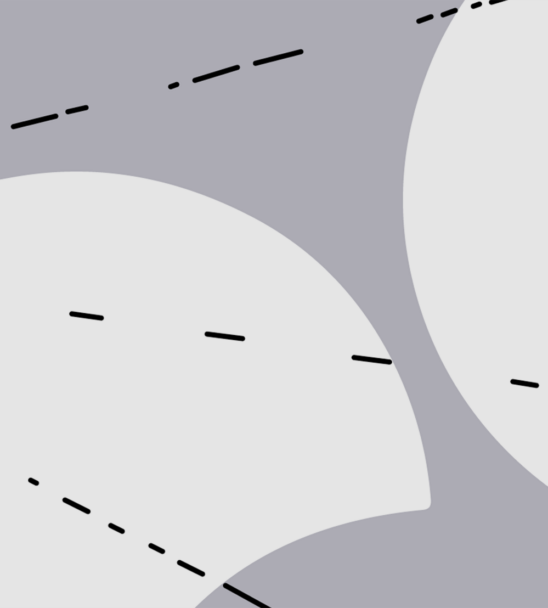
Viedokļi